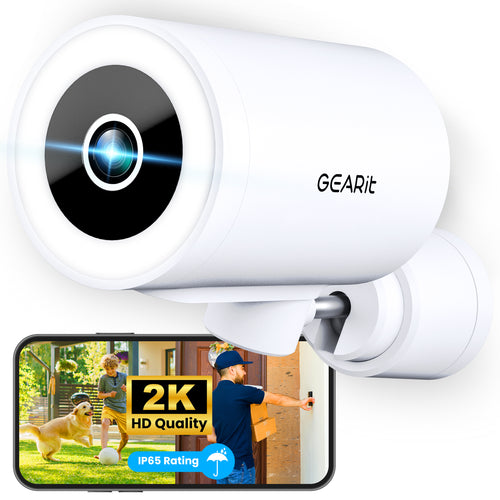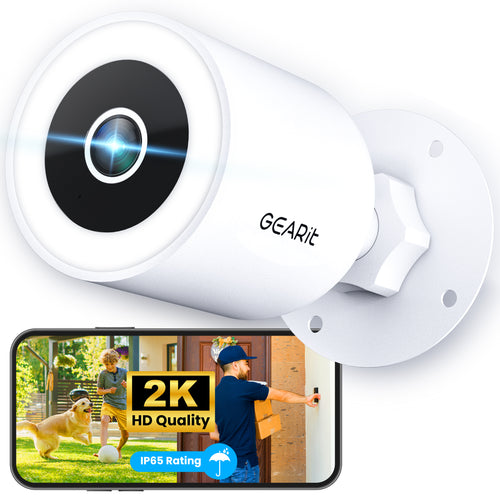When setting up a CCTV system, choosing the right cable infrastructure is crucial for its effectiveness. You might think it’s just about the cameras, but cables determine the quality of the video and the reliability of the system.
Selecting the correct type can greatly impact the performance of your CCTV system.
There are several types of cables used in CCTV setups, each serving different needs. Coaxial cables, network cables, and power cables must be considered when planning.
Understanding the differences between these cables can help in making the right decision for your system.
It's important to consider factors like distance, environment, and compatibility when choosing your cables.
Some cables are better for long distances, while others are more suited for outdoor use.
Compatibility with your existing equipment is also vital to ensure smooth operation.
Fundamentals of CCTV Cable Infrastructure
CCTV cable infrastructure is crucial for reliable surveillance systems. It involves choosing the right cables, ensuring quality, and comparing wired versus wireless setups.
Types of CCTV Cables
Different cables serve different purposes in CCTV setups. Coaxial cables are common for analog systems and offer good quality over short distances.
Twisted pair cables, like CAT5e or CAT6, are used in IP-based systems, providing higher data transfer rates.
These come in various forms, such as shielded or unshielded, impacting performance and interference resistance.
Fiber optic cables are ideal for long distances and high data transfer rates, often used in large installations. Understanding these types helps in selecting the best option for your needs.
Significance of Quality Cabling
Quality cabling plays a critical role in the performance of your CCTV system. Good cables ensure clear video signals and reduce losses.
Poor-quality cables can cause signal dropouts or degrade over time, impacting system reliability.
Proper installation, including secure connections and protecting cables from physical damage, is also vital. Using weatherproof cables for outdoor setups prevents deterioration from the elements.
Investing in high-quality materials might cost more upfront, but it saves trouble and expense in the long run.
Comparing Wired and Wireless Solutions
When setting up CCTV, you might consider wired or wireless solutions.
Wired systems offer consistent signal quality and are less susceptible to interference.
Installation can be more complex due to cable runs, but it provides stable performance.
Wireless systems are easier to install and more flexible in placement but sometimes face interference issues and may require more maintenance.
Evaluate your site conditions, such as distance and potential interference, to choose the right system for your needs.
Need reliable cables for your security setup? Browse our best-selling network cables today and find the perfect match for your security needs.
Design Considerations for CCTV Cabling
When planning your CCTV system, it's essential to think about how far the cables will run, the data they need to handle, and the conditions they'll face. These factors help ensure you choose the right cables for the job.
Determining Cable Length and Layout
Before setting up your CCTV cables, it's crucial to carefully plan the layout.
- First, measure the distance between each camera and the central monitoring station. Longer cables can lead to signal degradation.
- If the runs are extensive, consider using signal boosters or repeaters to maintain quality.
- Avoid unnecessary bends or loops, as these can also weaken the signal.
- Using a map or a simple sketch can help visualize and plan the routing effectively.
Understanding Bandwidth Requirements
Determining the right bandwidth is key for smooth video transmission.
High-resolution cameras need more data capacity, so check your camera specifications.
A list of resolutions and average bandwidth needs:
- 720p: Approximately 1-2 Mbps
- 1080p: Approximately 3-5 Mbps
- 4K: Approximately 15-25 Mbps
Ensure your cabling supports the data rate required by your cameras.
Modern systems usually require Category 6 or higher cables for optimal performance. This helps ensure smooth and uninterrupted footage.
Environmental Factors Impacting Cable Choice
The environment where the cables are installed can greatly affect their performance and lifespan.
For outdoor installations, consider using weatherproof and UV-resistant cables to withstand the elements.
In indoor settings, electromagnetic interference is a concern. Use shielded cables if near power lines or other sources of interference. If cabling is exposed to moisture, opt for waterproof options to prevent damage.
Choosing the right cable for your environment ensures reliability and longevity. Always prioritize robust materials over costs to prevent frequent maintenance issues.
Ready to upgrade your security cameras? Check out our top-quality smart cameras that work seamlessly with your cabling.
Installation Best Practices
Installing CCTV cables correctly ensures reliability and longevity. You must carefully route and manage cables, use the right termination techniques, and test everything thoroughly. Each step helps prevent future problems.
Cable Routing and Management
Organize your cable layout before installation. Plan paths that avoid power lines to reduce interference.
- Use protective conduits for exposed areas to shield cables from weather and damage.
- Secure cables with clips to prevent sagging or tripping hazards. Keep labels clear for each cable to identify connections quickly.
- Avoid tight bends and kinks which can harm the wires.
A clean and organized setup ensures easy maintenance. Follow industry standards for distance limitations to maintain signal quality.
Proper Termination Techniques
Terminations influence signal quality. Use the correct connectors, like BNC, for your cable type.
- Strip cables properly to avoid damaging the core or shielding.
- Ensure tight and secure connections. Loose connectors can cause signal loss or interference.
- Use a crimping tool suitable for your connectors; this ensures a better fit and signal path.
- Double-check your connections for mistakes. Incorrect terminations might lead to image distortion or equipment failure.
Keeping all terminations neat and precise is crucial.
Testing and Troubleshooting
Testing your installation is vital. Use a multimeter or cable tester to verify continuity and check for shorts.
Confirm each connection is working properly before and after installation.
During troubleshooting, start by inspecting physical connections first. Loose or corroded connectors are common issues. Use signal tracing tools to detect and fix weak signals or interruptions.
Regular maintenance checks are vital to catch early signs of wear. Documenting your findings helps track issues and solutions for future reference.
Don't let the elements compromise your security system. Learn about which ethernet cables work best outdoors and make your CCTV installation weatherproof.
Cable Types and Specifications
Different cables play a vital role in CCTV systems. You need to understand the types and specifications to make smart choices for your setup. Explore coaxial, Ethernet, and optical fiber options to decide what suits your needs best.
Coaxial Cables and Connectors
Coaxial cables are common in CCTV systems. They consist of a central conductor, insulating layer, metallic shield, and protective outer layer.
The most used type is RG59, suitable for short distances. Connectors like BNC are often used with these cables due to their secure fit.
Coaxial cables are durable and resistant to interference. If you plan on longer runs, consider RG6, which supports better picture quality over distance.
Keep in mind, signal loss increases with length, so consider signal boosters or repeaters.
Ethernet Cables and Standards
Ethernet cables are key in digital CCTV setups. Unlike coaxial cables, they transmit data and power through Power over Ethernet (PoE).
Cat5e and Cat6 are popular choices, with Cat6 offering faster speeds and less interference.
When using Ethernet cables, distance is a consideration. They support runs up to 100 meters, but longer distances may require a PoE extender.
With the ability to handle high-resolution video, these cables are ideal for modern IP cameras.
Optical Fiber: Advantages and Limitations
Optical fiber cables use light to transfer data, providing high bandwidth and low signal loss. This makes them perfect for long distances without the need for extra equipment.
They are immune to electromagnetic interference, ensuring consistent image quality. Fiber cables are more expensive and require specialized connectors like LC or SC.
While great for extensive systems, they may not be cost-effective for smaller setups. Installation might also be more complex, needing special tools or skilled technicians.
Upgrade your CCTV system with our high-performance Cat6 ethernet patch cables. These reliable cables ensure stable connections for perfect video quality.
Power Supply Solutions
There are several key methods to power CCTV systems, including Power Over Ethernet (PoE), centralized versus distributed power arrangements, and back-up systems for reliability. Each choice has its own benefits and limitations depending on your specific needs.
Power Over Ethernet (PoE)
PoE is a popular solution because it simplifies cabling by using a single cable for both power and data. This reduces installation costs and time.
Using PoE allows you to power devices like IP cameras without needing separate electrical outlets at each camera location.
Manufacturers often categorize PoE power into different types – like PoE, PoE+, and PoE++ – to indicate the power capacity they offer.
PoE is best suited for smaller setups with fewer cameras or for locations where it’s difficult to install additional wiring.
Centralized Versus Distributed Power
Centralized power systems involve one or more large power supplies located in a main control room. This setup allows for easier monitoring and maintenance.
Distributed power systems have individual power supplies near or at each camera location. This reduces the amount of wiring, making troubleshooting specific cameras easier without affecting the entire system.
While centralized systems are cost-effective for larger setups, distributed systems provide more flexibility for adjustments and expansions.
Back-Up Power Systems
Back-up power systems ensure that your CCTV system operates even during power outages. This is crucial for surveillance, especially in high-security areas.
Common methods include Uninterruptible Power Supplies (UPS) and battery backups.
- A UPS can supply power immediately in case of an outage, ensuring that there is no interruption.
- For extended outages, you might need additional solutions like generators.
- Make sure to regularly test and maintain these systems to ensure they are ready when needed.
Confused about cable colors? Check out our ethernet cable color code guide to keep your installation neat and functional.
Regulatory Compliance and Standards
When setting up CCTV cables, you have to follow rules and standards. These rules vary by location. Safety during installation is crucial, too.
Local and International Wiring Standards
CCTV wiring must meet specific local and international standards. These rules make sure systems are safe and reliable.
In some places, the National Electrical Code (NEC) is important. It outlines safe practices and is widely used in the United States.
Internationally, the IEC 60364 standard provides guidance on electrical installations. This helps ensure that your CCTV system works well and reduces risks.
Always check which standards apply in your area. Not following these rules can lead to legal issues and system problems.
Health and Safety in Cable Installation
During installation, health and safety are top priorities.
- Properly planned installations prevent accidents.
- You need to use the right tools and gear to avoid injuries.
- Wearing gloves and helmets is important.
- Secure all cables to prevent trips and falls.
- Make sure all electronic equipment is off before connecting cables.
- This reduces the risk of electric shocks.
- Training installers in safety measures minimizes risks.
By following these steps, you keep everyone safe while setting up your system.
Maintenance and Upkeep
Keeping your CCTV cable infrastructure in top condition requires regular maintenance, smart upgrades, and knowing when cables have reached the end of their life.
These practices ensure reliable performance and longevity.
Scheduled Maintenance Tasks
- Regular inspections are vital.
- Check for physical damage like frayed cables or exposed wires.
- Ensure connections are tight.
Dust and debris can gather over time, so clean the connectors and cable surfaces using a soft cloth.
Tasks to perform routinely:
- Inspect cables for wear and tear.
- Test signal quality to ensure clarity.
- Tighten any loose connections.
- Clean ports and cables regularly.
By keeping an eye on these elements, you can avoid unexpected issues and prolong the life of the infrastructure.
Upgrade Paths for Cabling Infrastructure
Technology evolves, and so should your system.Upgrading your cabling can improve performance.Consider switching to higher-quality cables with better shielding to reduce interference.
When upgrading, also think about future-proofing. Opt for cables that support increased data rates and power for devices.
This will accommodate future expansions without needing another overhaul.
Types of cables to consider:
- Coaxial cables: Traditional choice, still reliable.
- CAT6 cables: Offer higher speeds and bandwidth.
- Fiber optic cables: Best for long distances and high-quality data transmission.
Choose the right cables to match your equipment requirements and ensure optimal performance.
End-of-Life Considerations for Cables
Cables wear out over time. Recognizing when to replace them is key. Look for signs like persistent signal loss, visible wear, or failure to transmit data.
Know the lifespan of each cable type. For example:
- Coaxial cables: Around 20 years.
- CAT6 cables: 10 years, depending on usage.
- Fiber optic cables: Can last decades, but check for physical damage.
Having a replacement plan in place aids in minimizing downtime and keeps your system functional.
Replace failing cables promptly to maintain security and system efficacy.
Frequently Asked Questions
Choosing the right cable is crucial for the performance of your CCTV system. Such choices influence the picture quality, signal range, and overall reliability. Proper installation using the right connectors ensures a stable connection.
What type of cable is commonly used for CCTV camera installations?
The most common type of cable used is coaxial cable, specifically RG59.It is favored for its ability to carry video signals effectively. In some installations, you might also find CAT5/6 cables used for IP cameras.
How does cable quality affect CCTV system performance?
Cable quality significantly affects picture clarity and signal strength. High-quality cables reduce interference and signal loss, providing sharper images. Inferior cables may result in weaker signals and degraded video quality.
What are the differences between RG59 and RG6 cables in CCTV applications?
RG59 cables have a thinner diameter, which makes them suitable for shorter distances. RG6 cables have a thicker insulation layer, allowing for longer runs with minimal signal loss. Both are used, but RG6 is preferable for installations requiring longer cable lengths.
What are the recommended practices for wiring a CCTV camera?
Use the correct type of cable and ensure that connections are secure. Avoid kinks or bends in the cable that can cause damage. Routing the cable away from electrical sources helps prevent interference.
How can cable selection impact the maximum distance for a CCTV camera signal?
Cable type and quality affect how far a signal can travel without degradation. RG59 is suitable for shorter distances, typically up to 750 feet, while RG6 can support signal integrity over longer runs.
What connectors are typically used for securing CCTV cable connections?
BNC connectors are commonly used for video connections in CCTV systems. They offer a secure, twist-and-lock connection that minimizes signal loss. For power, you might use either DC barrel connectors or terminal blocks depending on your setup.
Related articles:





























































